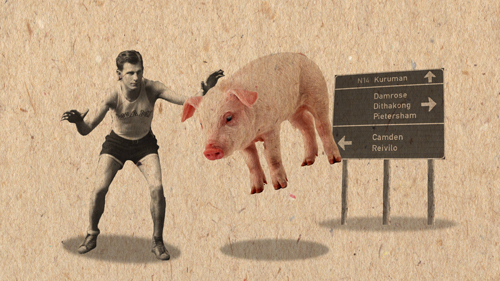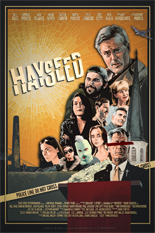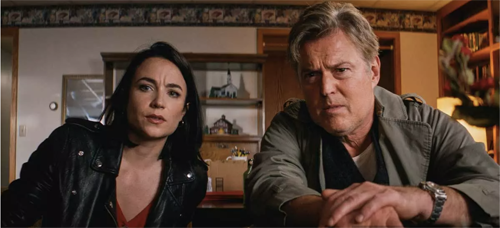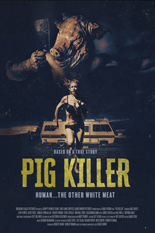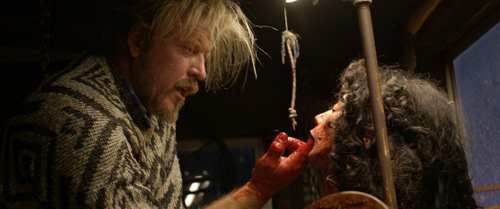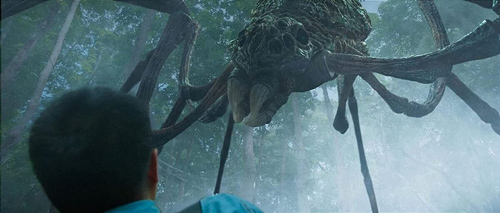
In Brad Sykes’ Scream Queen, real-life VHS scream queen Linnea Quigley plays the fictitious scream queen Malicia Tombs. On the set of her latest opus, she argues with her co-stars, director and crew members before leaving in a huff. Tragically, Malicia’s car crashes and explodes, killing her.
The director, Eric Orloff (Jarrod Robbins, Sykes’ Zombie Chronicles), remains haunted by the events of his unfinished picture. One day, via an invite to a mansion, he’s offered $10,000 to complete it. Despite the place being located at 101 Killington Street, he shows up at the designated time, only to find a reunion of sorts of his ill-fated production’s cast and crew. They’ve been gathered for an evening of revenge in Malicia’s name — call it Six Little Indians with zero second takes. “Cut” means “cut.”
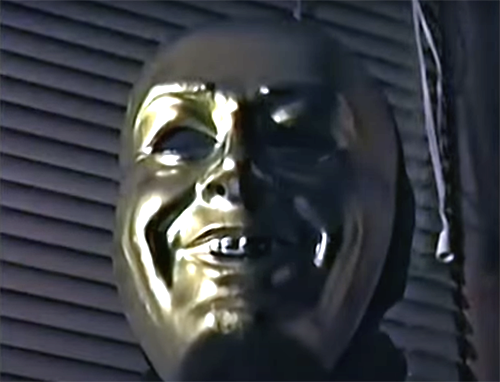
Let’s acknowledge the obvious: Shooting on VHS presents several inherent and inescapable challenges, such as wind overpowering the camera’s microphone or night scenes looking especially ugly. The more SOVs you expose yourself to, the easier it is to forgive those limitations. Here, doing so leaves you with terrific fun. Your one true complaint may be the absence of nudity from the chesty Nicole West (Ted V. Mikels’ Dimension in Fear) in her animal-print underwear sex scene. I’m with you.
Building his slasher with a meta setup, Camp Blood creator Sykes gives the shot-on-video world its Scream. At the risk of oversell, it’s clear from the outset Sykes poured his all into the project, where others would half-ass it. His opening shot is Altman-style audacious for any format, running a couple of minutes as the camera moves from person to person, introducing viewers to each character and requiring every performer to be on their toes.
Similarly, the prolific Quigley (Murder Weapon) is asked not simply to show up, but act. Don’t worry, kiddos, because your beloved kill scenes remain in full supply. Serving as host for the proceedings is a dwarf (Kurt Levee) — a nice Gothic touch, even if the guy is wearing a quasi-Christmas sweater. That’s just one element making Scream Queen the most wonderful kind of SOV horror. —Rod Lott




